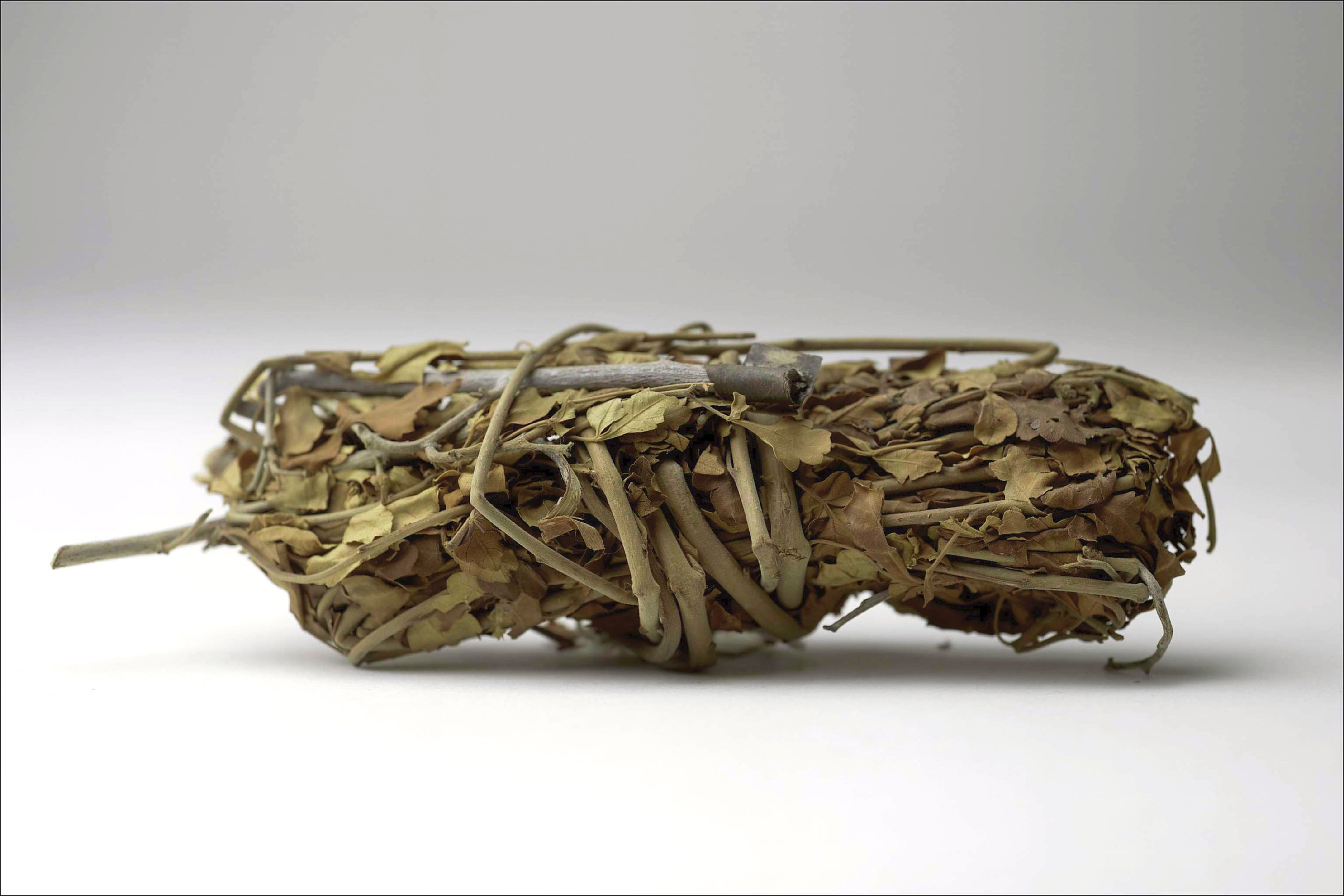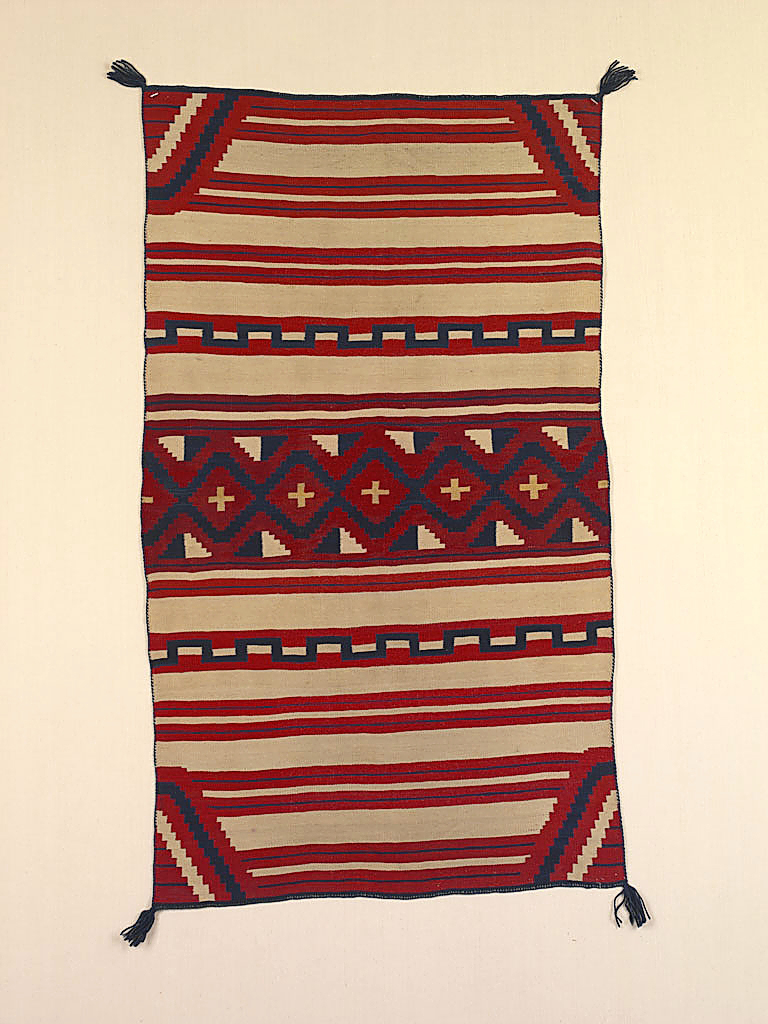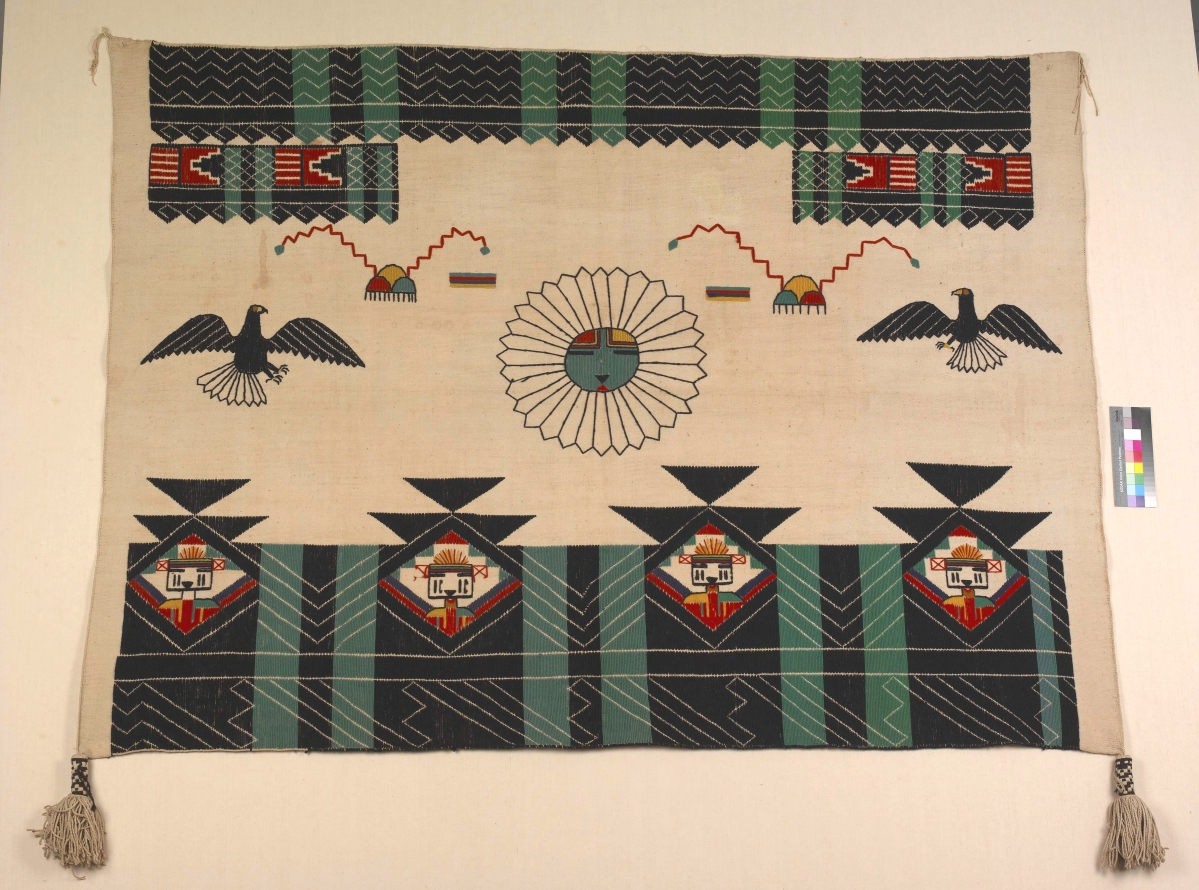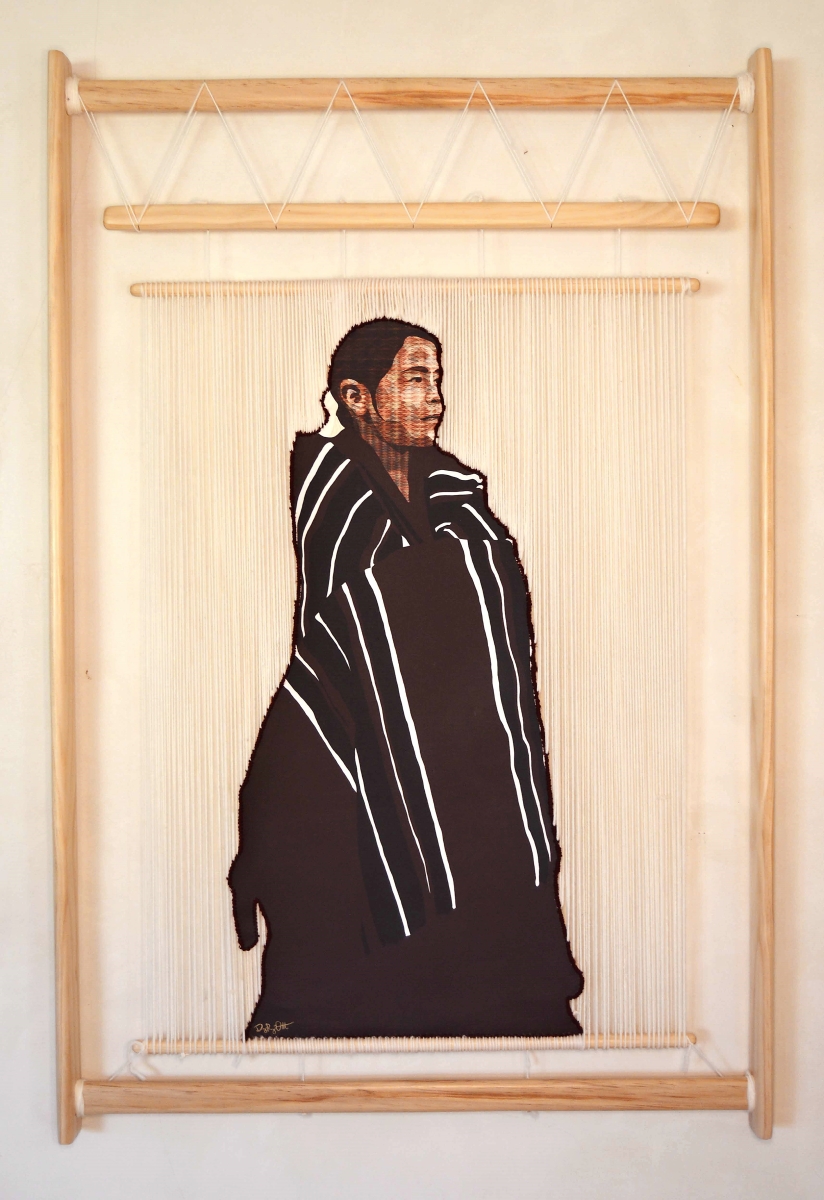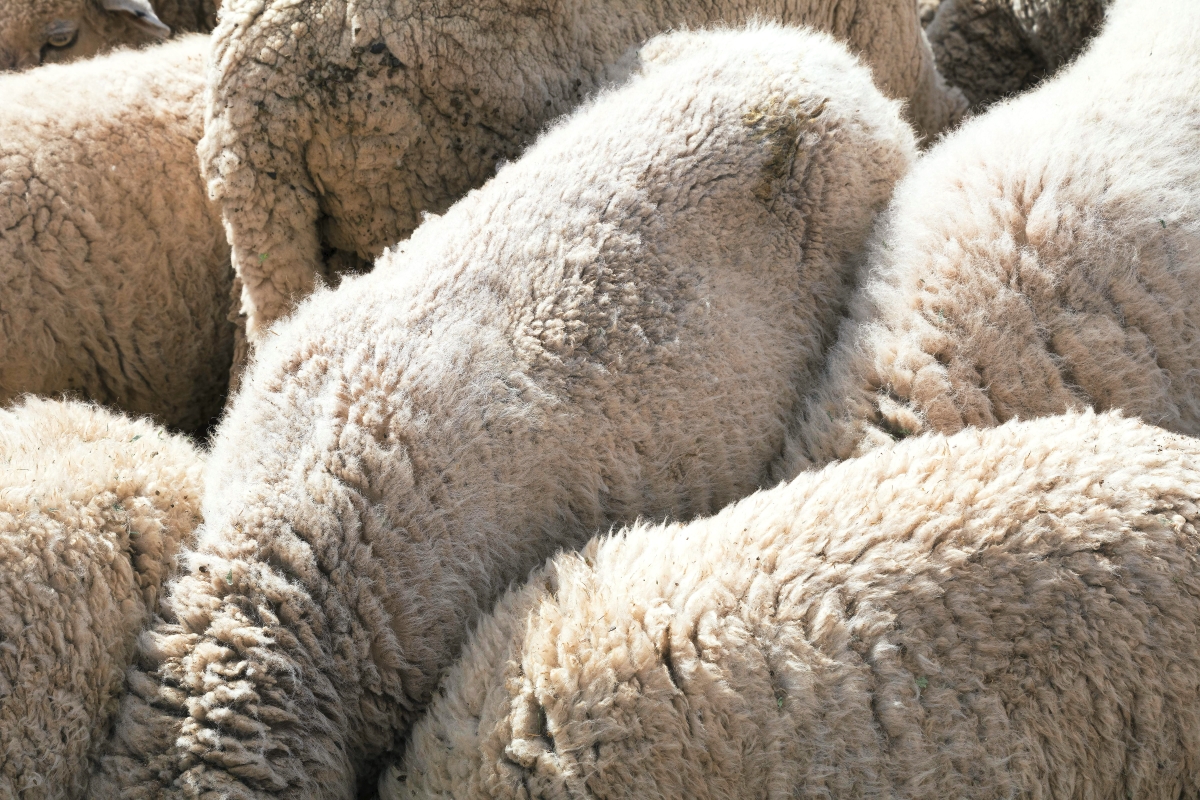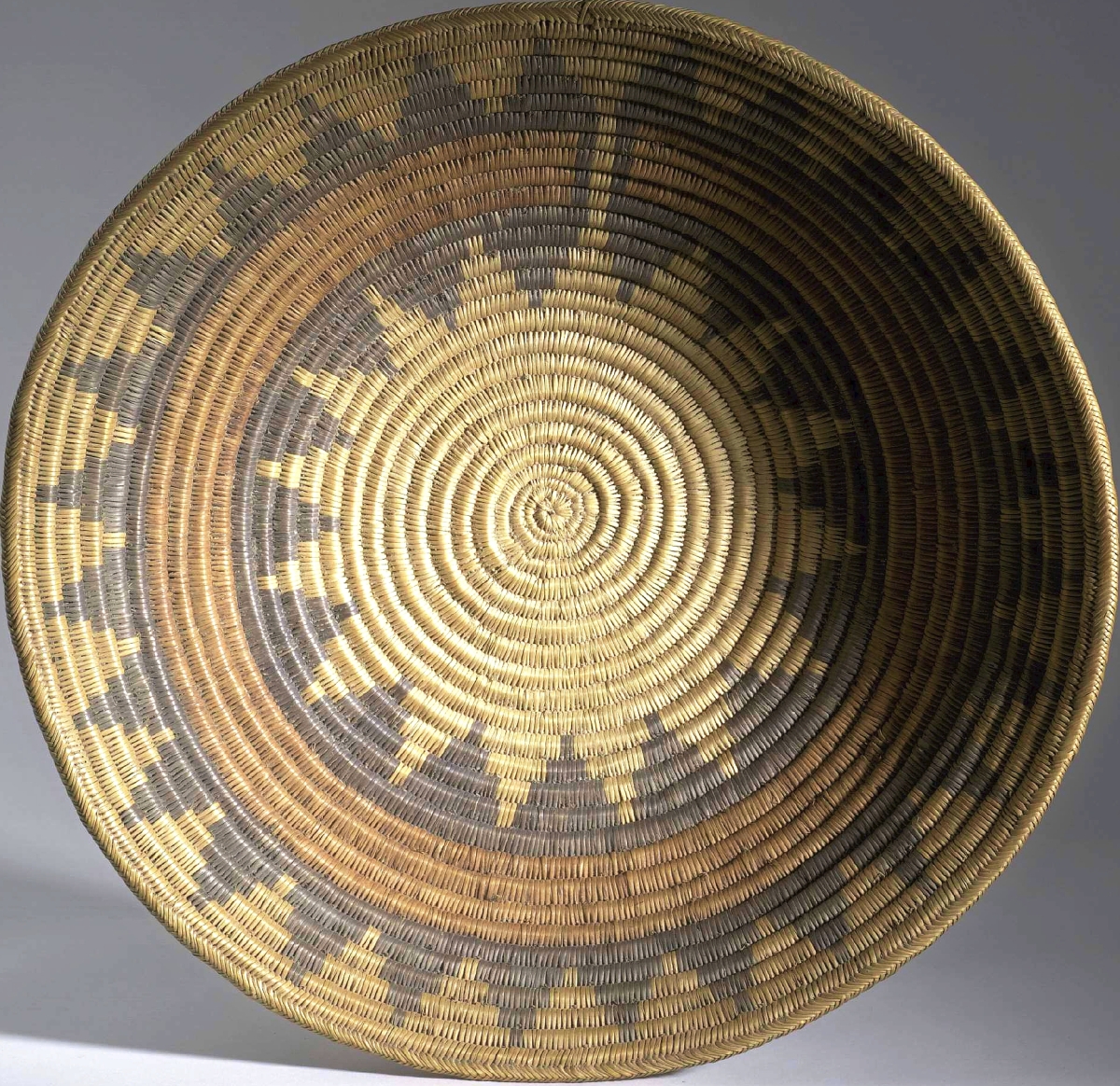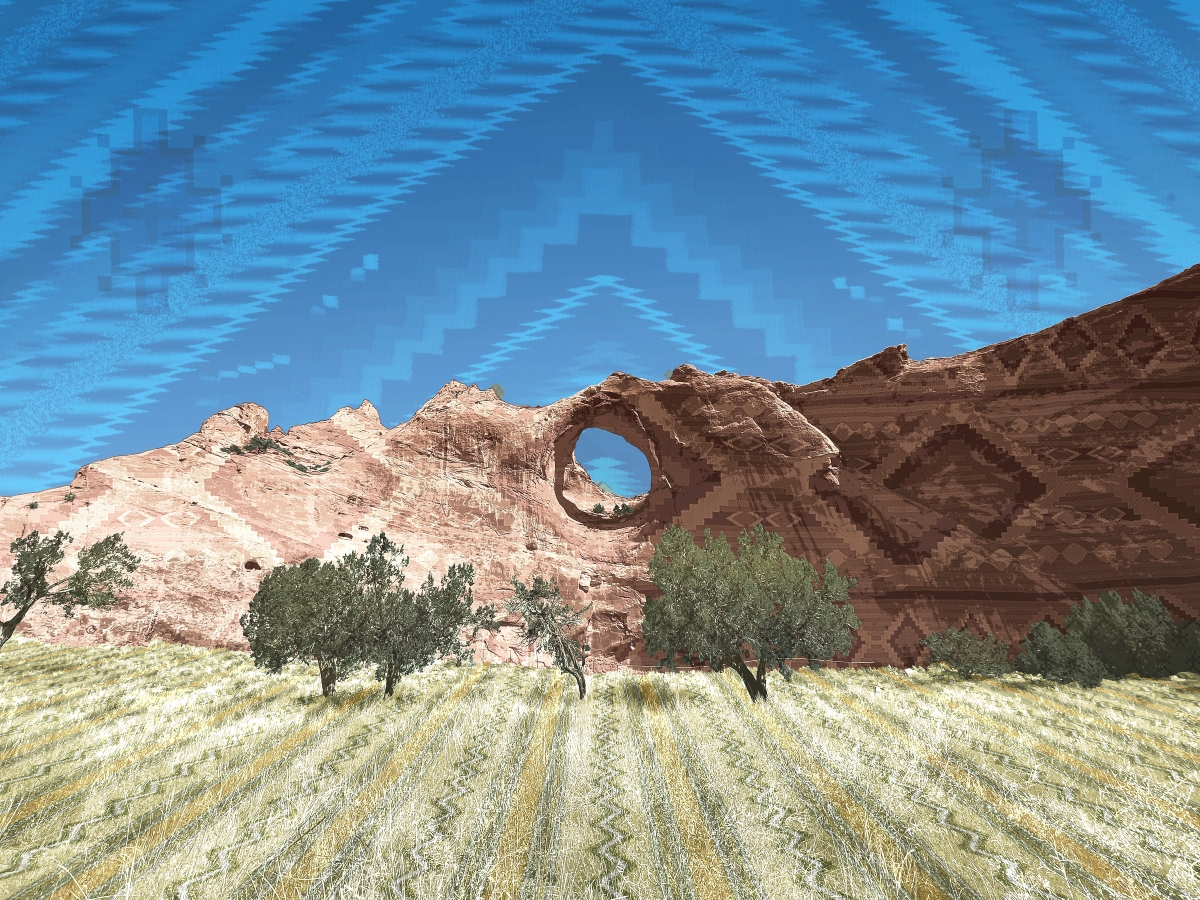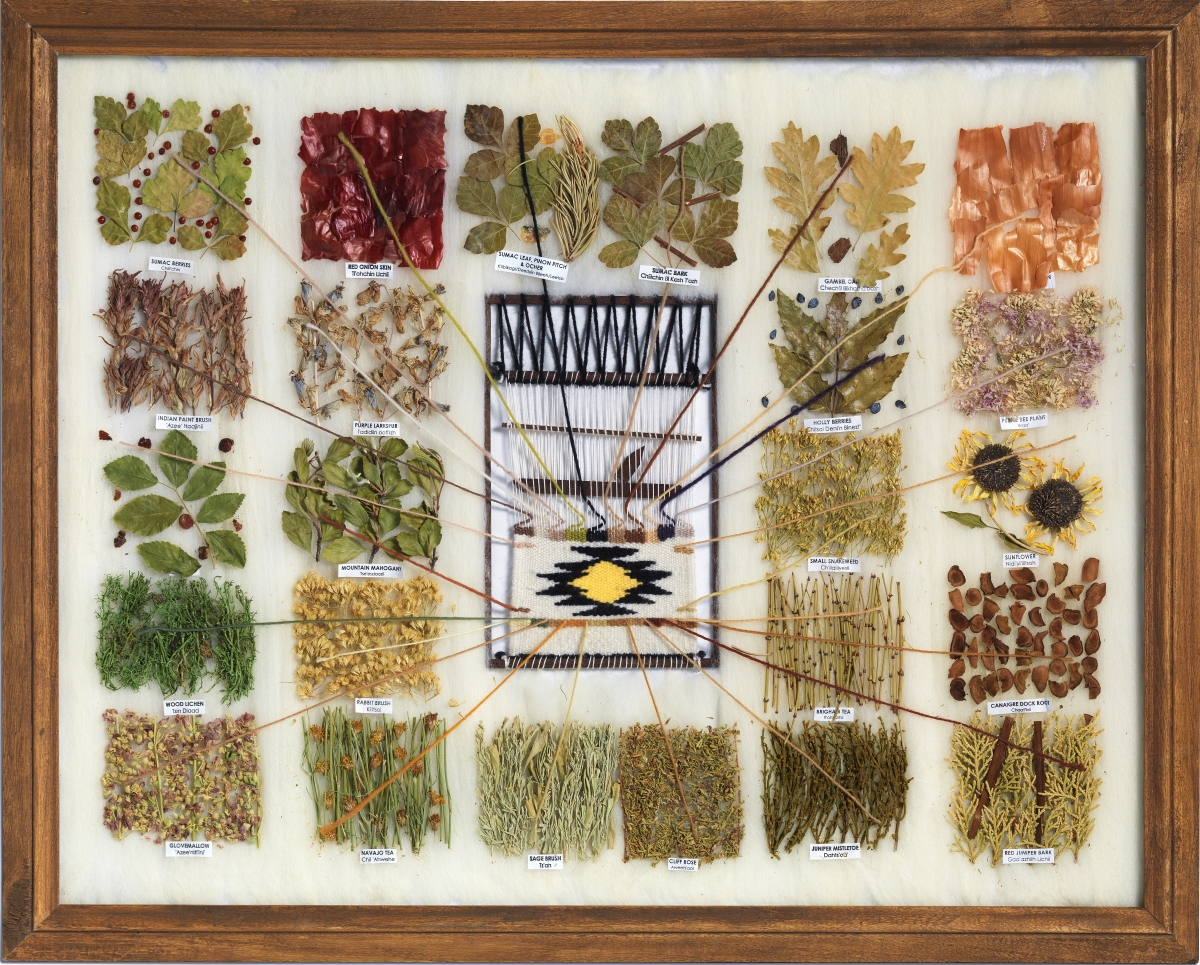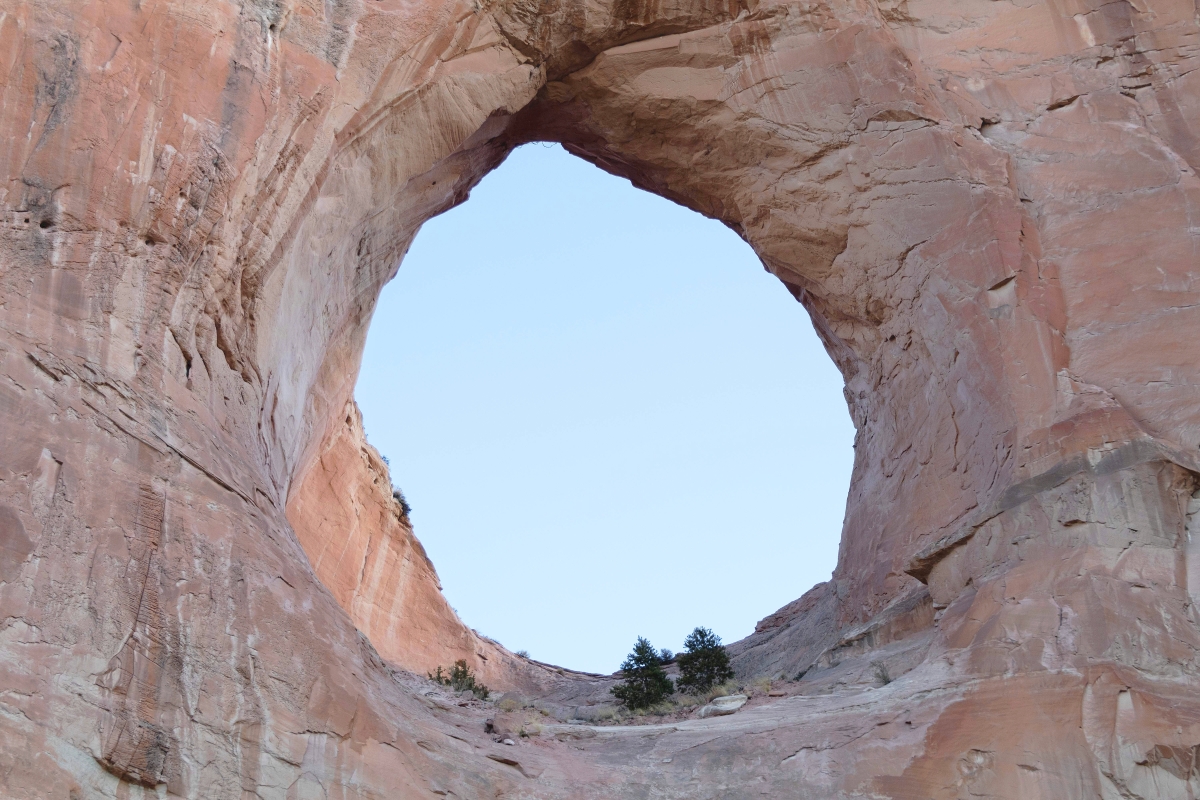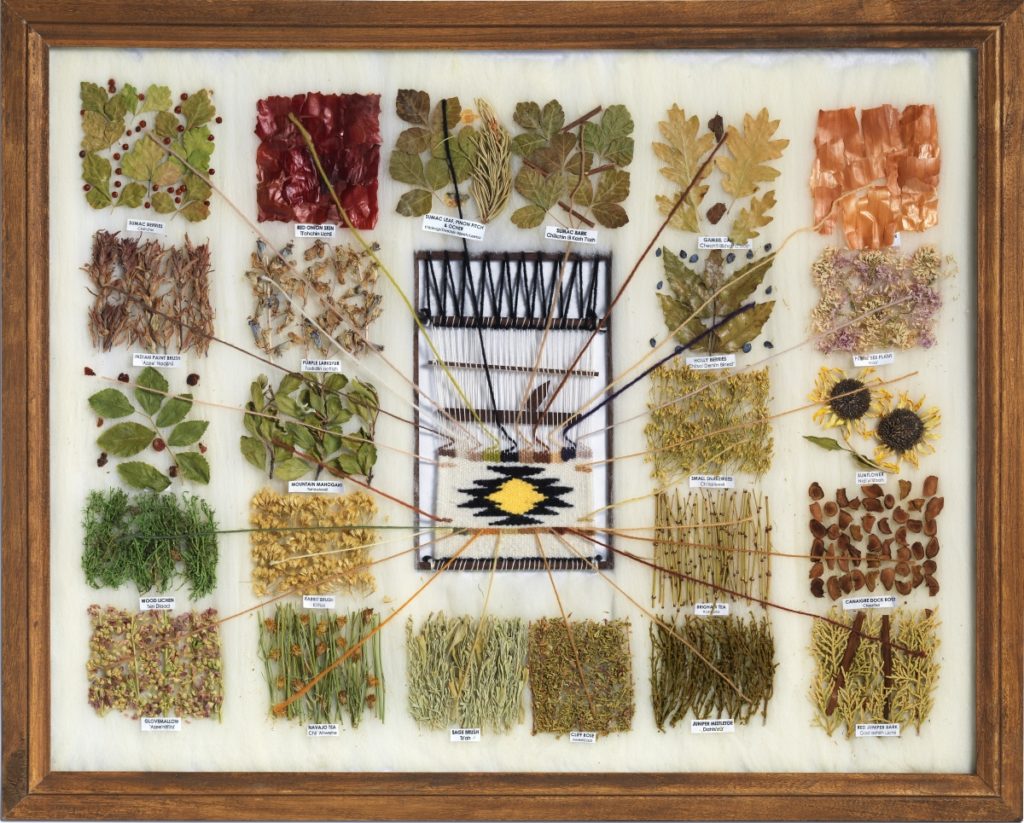
Diné/Navajo dye chart by Roselyn Washburn, 2019, dried plants, wool, ink and paper. Courtesy of John McCulloch, Teec Nos Pos Trading Post. Bruce M. White photo.
By Karla K. Albertson
NEW YORK CITY – When “Shaped by the Loom: Weaving Worlds in the American Southwest” opened at the Bard Graduate Center in mid-February, visitors gained access to an exhibition showcasing highlights from the American Museum of Natural History’s (AMNH) extensive collection of Diné (Navajo) weavings, many acquired more than 100 years ago and never before exhibited. Complementing the textiles are themed sections on weaving practices and design and photography of the landscape where they were created.
Even more expansive – rather than a print catalog – there is an interactive online exhibition with scholarly essays, which opens access to more of AMNH’s vast collection of related textiles. One essay – “Knowing, Making, Naming” – is by the show’s curator, Hadley Jensen. Another, “My Journey with the Loom,” is by Lynda Teller Pete, a master weaver who was a consultant on the exhibition.
Jensen is a postdoctoral fellow in Museum Anthropology, Bard Graduate Center/American Museum of Natural History. Talking with Antiques and The Arts Weekly, she said, “The theme of the fellowship was ‘Indigenous Textiles of the American Southwest,’ and then the focus of that was on this specific collection at the American Museum of Natural History, which had rarely been seen by the public.”
“The Navajo textiles came in to the museum in three major accessions, in 1910 and 1911. A lot of collectors know about this historic collection because AMNH has the Hollister Collection, which is 66 Dine and Navajo textiles. Uriah S. Hollister (1838-1929) published his own catalog with color plates in 1903 – The Navajo and His Blanket. He was an Army officer, stationed for a time on the Navajo reservation. His collection was one that AMNH definitely wanted to have, and they were able to acquire it in its entirety.”
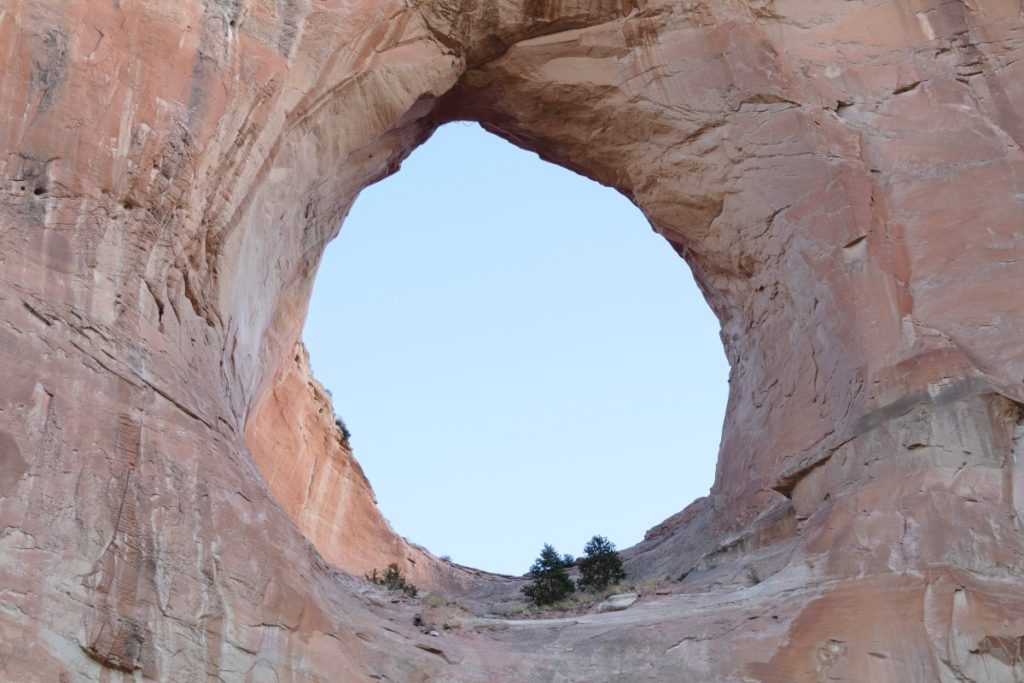
“Window Rock (Window Rock, Ariz)” by Rapheal Begay (Diné), from “A Vernacular Response” series, 2018, digital photograph. Courtesy of the artist.
“The museum also has the J.P. Martin Collection and then a collection that was split between the Met and AMNH, which came from a private collector and donor named Margaret Olivia Sage. So, in total, they have almost 300 Navajo textiles, which have mostly been in museum storage. Through Bard Graduate Center, we were able to create this exhibition. And an important part of it has been my collaboration with sixth generation Diné (Navajo) weavers Lynda Teller Pete and Barbara Teller Ornelas.”
“Together, we’ve created this exhibition that includes a selection of items from the AMNH collection as well as some contemporary works and photography. We commissioned a soundscape for the gallery via a Navajo composer and pianist named Connor Chee. He will present an evening of music at the end of April, part of the multiple-event schedule connected to the show.”
The exhibition was organized around six distinct themes – “Homeland and Cosmology,” “Ecology,” “Dyeing and Coloring,” “Techniques and Technologies,” “Design Elements” and “Value and Exchange.” These help the curator fulfill specific goals: “I want visitors to understand Navajo weaving certainly as an art form but also as a cultural practice and a lived experience.”
Exhibition of historic museum collections in the past have often followed a common path, so Jensen decided: “And so, with this exhibition, I was interested in providing new interpretations of these incredible weavings. We have labels that are actually written by the artists, which is not always the case in exhibitions.”
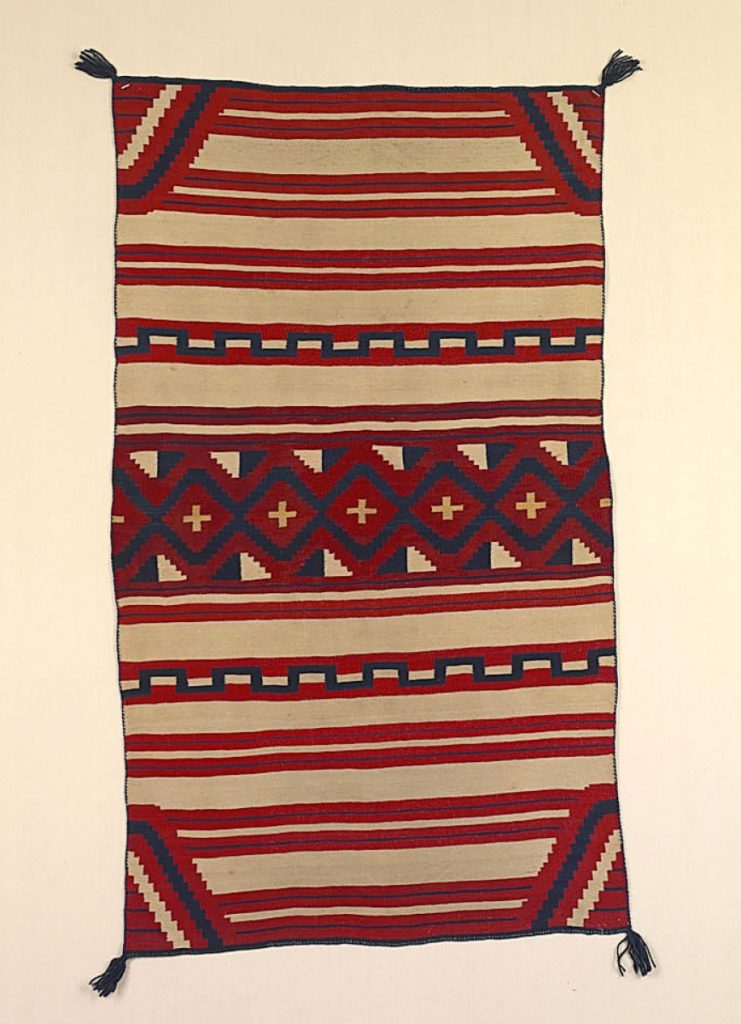
Child’s blanket by an unidentified Diné/Navajo artist, before 1980, wool, tapestry weave. Donated by Mrs Lincoln Ellsworth, 1980. Courtesy of the Division of Anthropology, American Museum of Natural History.
“My hope was to give visitors a sense of the process behind the product. In addition to finished textiles, we also have a lot of material related to the weaving process, and I believe that it will give visitors a sense of the holistic practice of Navajo weaving.”
Chief’s blankets, which are now highly prized by collectors, were originally made to be wearing blankets, as can be seen in historic photographs. An important example from the Hollister collection would be the Phase 2 example in the show, which he purchased in 1911. Later in the century, weaving designs and practices were influenced by sales to tourists and trading posts.
The curator explained, “I was trying to shift away from that history and to focus more on the individual agency of the weavers themselves and the decisions that they were making. And this is what I love about looking at some of the older weavings – the materials, the designs and the techniques. That’s why I enjoyed the process of preparing this exhibition. There’s so much individual creativity and expression.”
While nothing can compare to standing in the land itself, the exhibition includes dramatic photographs taken at Window Rock, Monument Valley and Canyon de Chelly by Navajo photographer Rapheal (sic) Begay. There are also panoramic views with a 360 degree camera to give the visitors a sense of being there and perhaps inspire a bit of travel.
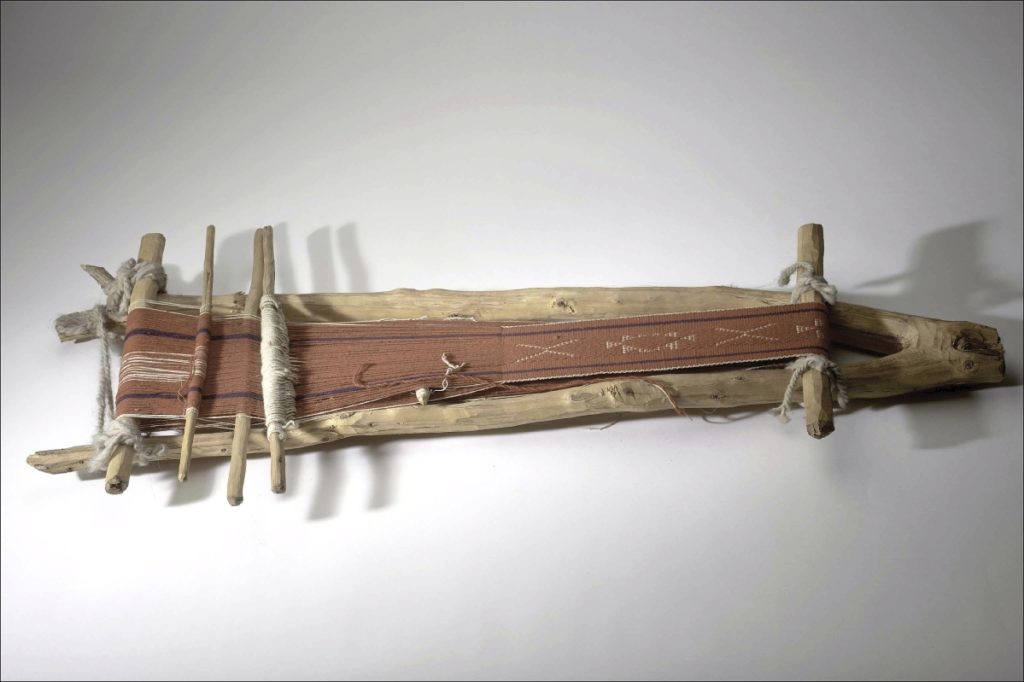
Loom with unfinished weaving by an unidentified Diné/Navajo artist, before 1910, wood, string and yarn. Donated by Benjamin Talbot Babbitt Hyde, 1910. Courtesy of the Division of Anthropology, American Museum of Natural History.
If the photos lead to a bit more exploration, catalogs are still available for “The Navajo Blanket,” a major exhibition in 1972 organized by the Los Angeles County Museum of Art, which drew from many lenders and went on to spend four years at the Navajo Tribal Museum in Window Rock Arizona.
Also, of interest is Navajo Textiles, the William Randolph Hearst Collection by Nancy J. Blomberg, an assemblage of 185 examples which was a major passion of the flamboyant publisher.
“Shaped by the Loom” is on display at the Bard Graduate Center through July 9.
The Bard Graduate Center is at 18 West 86th Street. For more information, 212-501-3000 or www.bgc.bard.edu.

